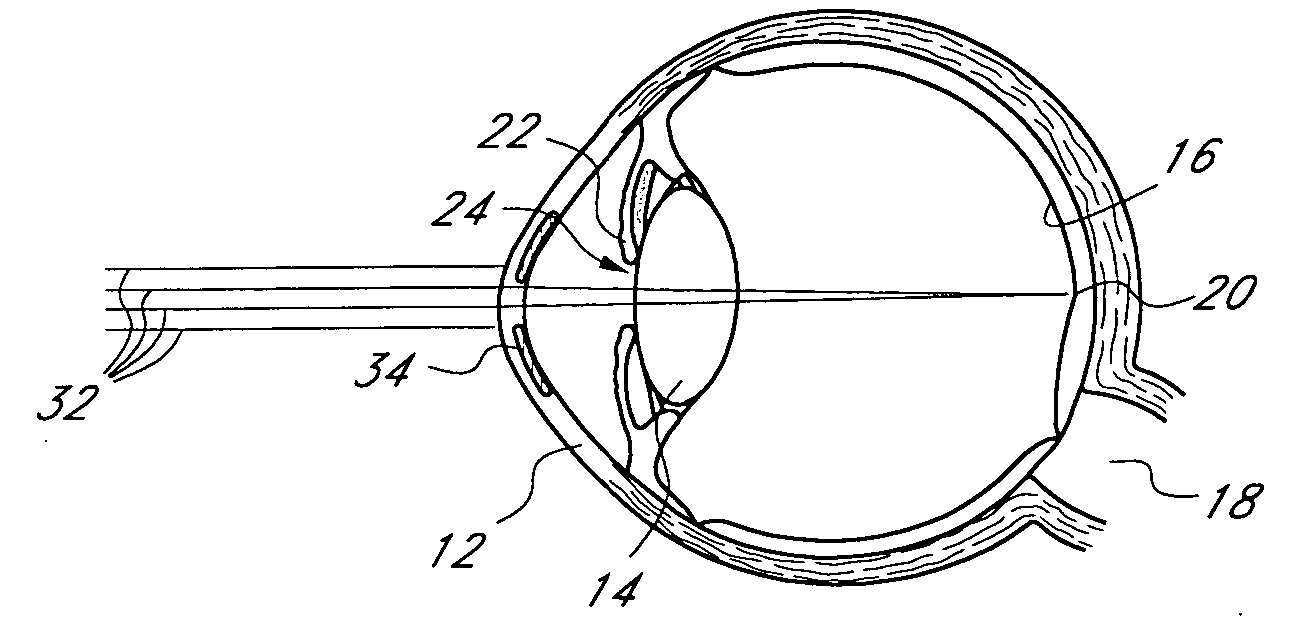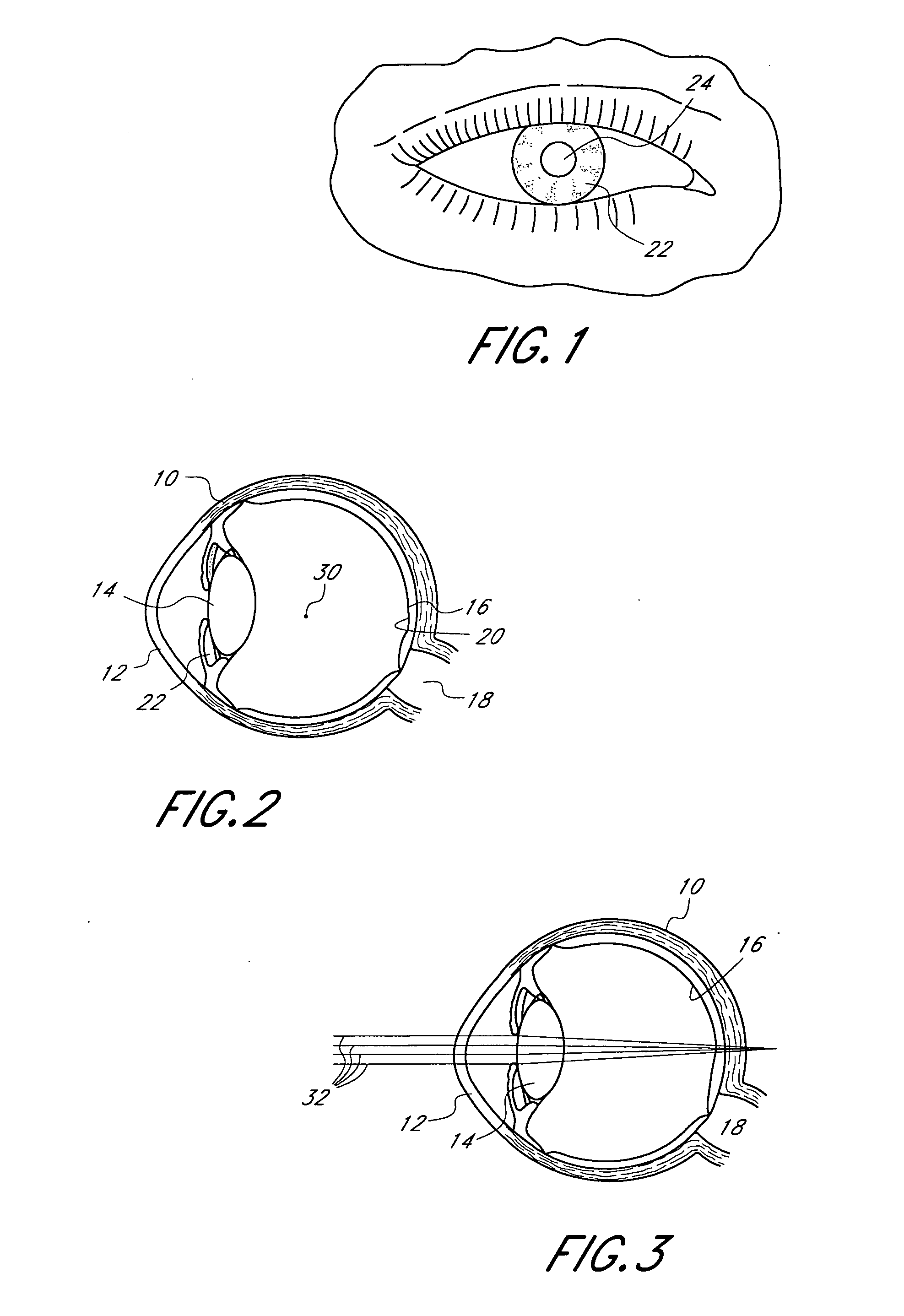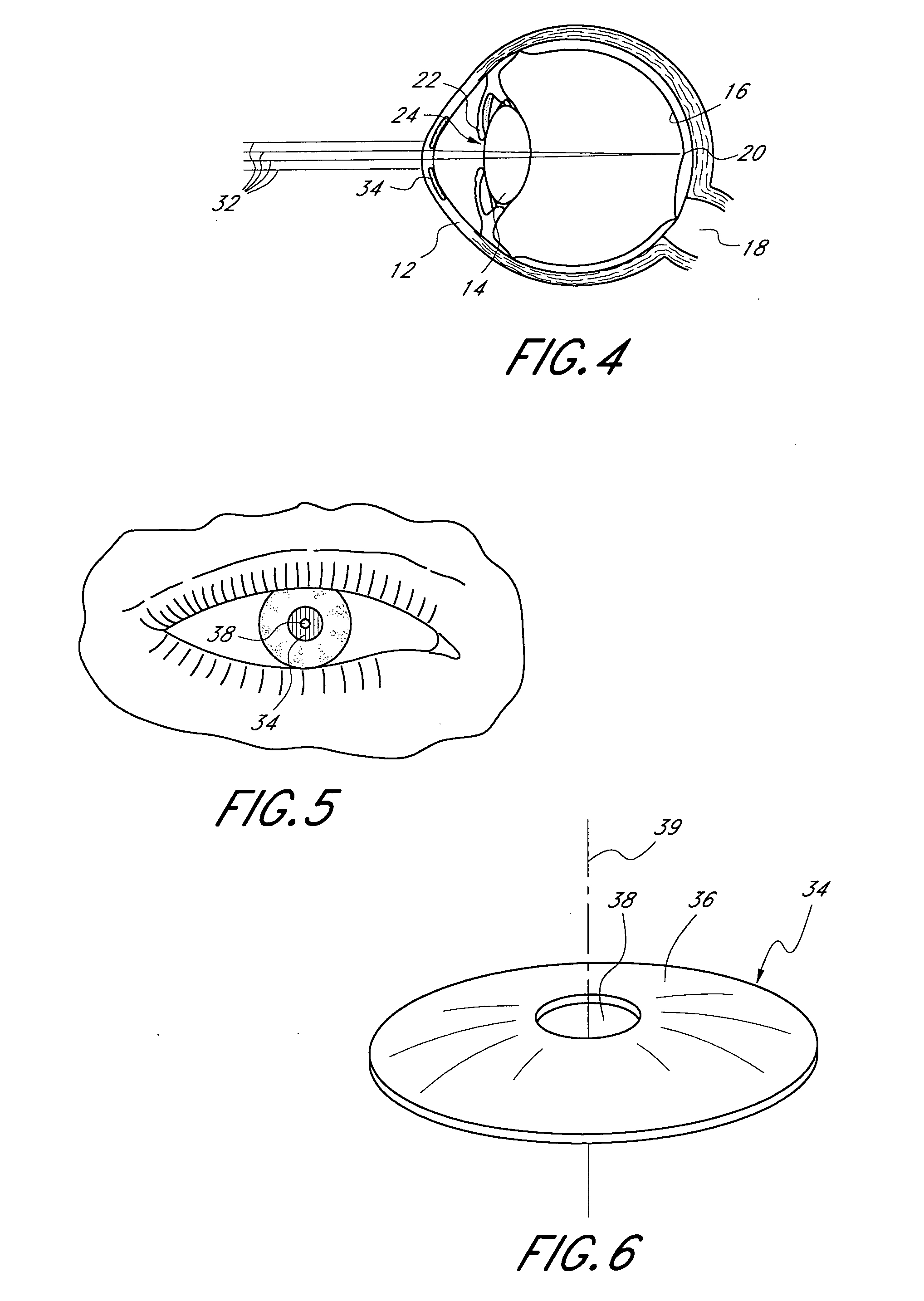Mask configured to maintain nutrient transport without producing visible diffraction patterns
a technology of nutrient transport and mask, applied in the field of masks, can solve the problems of poor vision, inadequate treatment of vision deficiencies, presbyopia, etc., and achieve the effect of eliminating visible diffraction patterns and increasing the depth of focus of the patien
- Summary
- Abstract
- Description
- Claims
- Application Information
AI Technical Summary
Benefits of technology
Problems solved by technology
Method used
Image
Examples
Embodiment Construction
[0102] This application is directed to masks for improving the depth of focus of an eye of a patient and methods and apparatuses for applying such masks. The masks generally employ pin-hole vision correction and have nutrient transport structures. The masks may be applied to the eye in any manner and in any location, e.g., as an implant in the cornea (sometimes referred to as a “corneal inlay”). The masks can also be embodied in or combined with lenses and applied in other regions of the eye, e.g., as or in combination with a contact lenses or an intraocular lenses. Apparatuses and methods for applying the masks to the patient generally use the patient's vision to locate the patient's line of sight while the mask is being applied to the eye so that the mask may be properly aligned with the line of sight.
I. Overview of Pin-Hole Vision Correction
[0103] A mask that has a pinhole aperture may be used to improve the depth of focus of a human eye. As discussed above, presbyopia is a pr...
PUM
 Login to View More
Login to View More Abstract
Description
Claims
Application Information
 Login to View More
Login to View More - R&D
- Intellectual Property
- Life Sciences
- Materials
- Tech Scout
- Unparalleled Data Quality
- Higher Quality Content
- 60% Fewer Hallucinations
Browse by: Latest US Patents, China's latest patents, Technical Efficacy Thesaurus, Application Domain, Technology Topic, Popular Technical Reports.
© 2025 PatSnap. All rights reserved.Legal|Privacy policy|Modern Slavery Act Transparency Statement|Sitemap|About US| Contact US: help@patsnap.com



